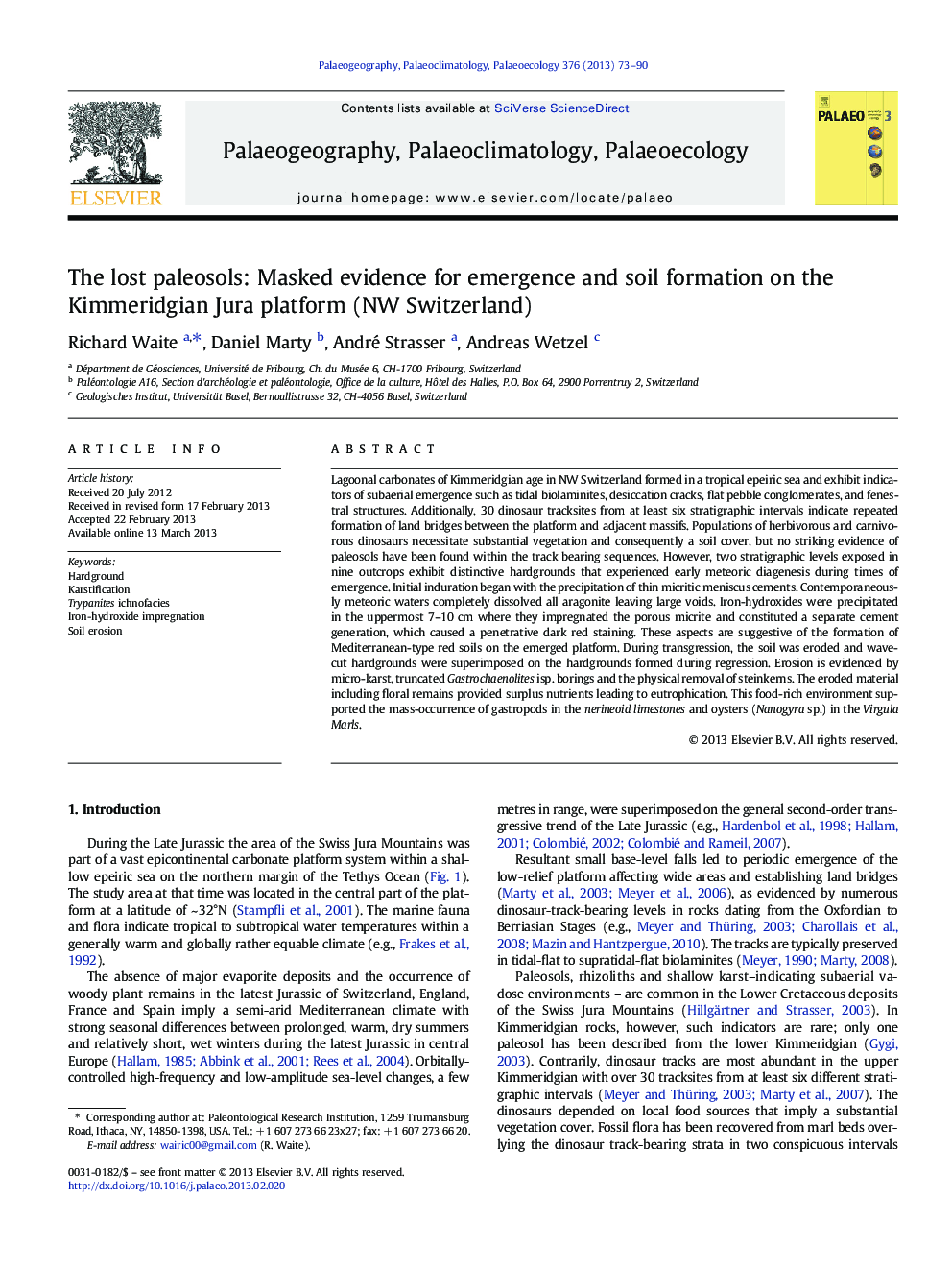| کد مقاله | کد نشریه | سال انتشار | مقاله انگلیسی | نسخه تمام متن |
|---|---|---|---|---|
| 4466604 | 1622210 | 2013 | 18 صفحه PDF | دانلود رایگان |

• Two stratigraphic intervals recording conspicuous facies changes are described.
• The significance of hardgrounds between the two facies-types is examined.
• The surfaces are shown to represent the former location of soil covers.
• A model explaining the history of the depositional environment is proposed.
• The hardgrounds form hiati, which aid in sequence stratigraphical reconstructions.
Lagoonal carbonates of Kimmeridgian age in NW Switzerland formed in a tropical epeiric sea and exhibit indicators of subaerial emergence such as tidal biolaminites, desiccation cracks, flat pebble conglomerates, and fenestral structures. Additionally, 30 dinosaur tracksites from at least six stratigraphic intervals indicate repeated formation of land bridges between the platform and adjacent massifs. Populations of herbivorous and carnivorous dinosaurs necessitate substantial vegetation and consequently a soil cover, but no striking evidence of paleosols have been found within the track bearing sequences. However, two stratigraphic levels exposed in nine outcrops exhibit distinctive hardgrounds that experienced early meteoric diagenesis during times of emergence. Initial induration began with the precipitation of thin micritic meniscus cements. Contemporaneously meteoric waters completely dissolved all aragonite leaving large voids. Iron-hydroxides were precipitated in the uppermost 7–10 cm where they impregnated the porous micrite and constituted a separate cement generation, which caused a penetrative dark red staining. These aspects are suggestive of the formation of Mediterranean-type red soils on the emerged platform. During transgression, the soil was eroded and wave-cut hardgrounds were superimposed on the hardgrounds formed during regression. Erosion is evidenced by micro-karst, truncated Gastrochaenolites isp. borings and the physical removal of steinkerns. The eroded material including floral remains provided surplus nutrients leading to eutrophication. This food-rich environment supported the mass-occurrence of gastropods in the nerineoid limestones and oysters (Nanogyra sp.) in the Virgula Marls.
Journal: Palaeogeography, Palaeoclimatology, Palaeoecology - Volume 376, 15 April 2013, Pages 73–90